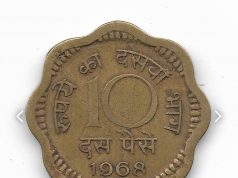Bygone Doon
 By Pradeep Singh
By Pradeep Singh
It would be unthinkable for an author of popular novels to have the hero die on the first page of the book. It would violate the grammar of a good plot to an entertaining story. But epic battles are not scripted by pens of writers but by blood drops on hallowed grounds.
Nalapani would have been different in its emotions and haunting appeal had the two protagonists been other than Major General Rollo Gillespie and Balbhadra Kunwar, or even if the battle had been fought between two other nations.
 Gillespie, 48, and Balbhadra, 25, were men in their prime, one at peak of his career, the other capable of achieving anything that he put his mind and might to. The two newly emergent imperialistic and expansionist powers in the sub-continent were at the end of the 18th century on a collision path. The British, rather the East India Company, avaricious to the core and relentless in its pursuit of pelf, saw the region as its private burrow. The rising Gorkha power after dominating Nepal’s mountainous valleys sought more territorial gains in contiguous territories to its west and the south. The two adversaries were facing the inevitable if not unenviable situation on their presumed borders.
Gillespie, 48, and Balbhadra, 25, were men in their prime, one at peak of his career, the other capable of achieving anything that he put his mind and might to. The two newly emergent imperialistic and expansionist powers in the sub-continent were at the end of the 18th century on a collision path. The British, rather the East India Company, avaricious to the core and relentless in its pursuit of pelf, saw the region as its private burrow. The rising Gorkha power after dominating Nepal’s mountainous valleys sought more territorial gains in contiguous territories to its west and the south. The two adversaries were facing the inevitable if not unenviable situation on their presumed borders.
 The East India Company after establishing a comfortable foothold in parts of India sought to expand further its business tentacles to the north and connect to the Chinese markets by routes going through Nepal and Tibet. In this, they did not find the Nepalese willing partners. On the contrary, they were rudely jolted to see their northern neighbour aggressively pushing its own boundaries southward and to the west. All attempts by the British failed to get them to cut ice with the Nepalese court in Kathmandu and diplomatic means continued to draw a blank. Pretexts were sought and easily given by the Nepalese, and Lord Moira, the Governor General, issued an ultimatum which the Nepalese held in contempt.
The East India Company after establishing a comfortable foothold in parts of India sought to expand further its business tentacles to the north and connect to the Chinese markets by routes going through Nepal and Tibet. In this, they did not find the Nepalese willing partners. On the contrary, they were rudely jolted to see their northern neighbour aggressively pushing its own boundaries southward and to the west. All attempts by the British failed to get them to cut ice with the Nepalese court in Kathmandu and diplomatic means continued to draw a blank. Pretexts were sought and easily given by the Nepalese, and Lord Moira, the Governor General, issued an ultimatum which the Nepalese held in contempt.
 Border tensions became heightened at Purnea, Tirhut, Sargun, Bareilly, Gorakhpur and Dehradun.
Border tensions became heightened at Purnea, Tirhut, Sargun, Bareilly, Gorakhpur and Dehradun.
A four pronged attack was prepared by the British to put pressure on the Nepalese court, dominated by the Gorkhas, who had been behind the rapid expansion of their borders across into present Uttarakhand, Himachal and pushing further towards Kashmir. This expansion of Nepalese territory was approximately two hundred times in a matter of a generation, making the Gorkha leadership defy further the British sabre-rattling.
In all this turbulence, Dehradun under Gorkhas since 1804 became a flashpoint and the first battle zone of the Anglo- Gorkha war of 1814-1815.
One popular view was that the British army’s arrival at the borders of the Doon Valley was not anticipated correctly by the Gorkhas and that they moved hurriedly to garrison themselves at Khalunga situated atop Nalapani. But the fact is that the Gorkhali commander in Doon, Balbhadra Kunwar, had been following the developing tensions since May 1814, almost six months before the siege and attack on Khalunga by the British forces. The astute Gorkhali commander had taken adequate measures to thwart the British and the same became most painfully etched in the minds of the British. The British bravado and over confidence in their superior military resources, natural to them having successfully campaigned against Napoleon Bonaparte in Europe, was not of much avail when asking Balbhadra Kunwar to surrender and hand over the Khalunga Fort. The rebuff by Balbhadra Kunwar to the Bristish has been played down in their records but that is another story.
The British forces entering the Doon through Timli and Kheri passes and proceeding to the tableland facing Khalunga were astounded by the difficulty of the approach to the 3,268 feet rudimentary pentangular fortification at Khalunga but stockaded to strengthen the defences.
(To be continued)








